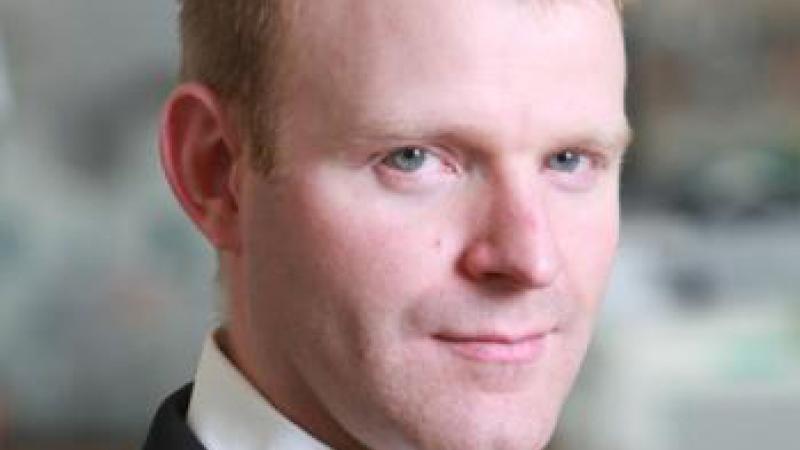September 4, 2015

Troy, N.Y. - The National Institutes of Health (NIH) has awarded $1.3 million to Ryan Gilbert, associate professor of biomedical engineering at Rensselaer, to support research that could give hope to the thousands of Americans who sustain life-changing spinal cord injuries each year.
The five-year grant, from NIH’s National Institute of Neurological Disorders and Stroke, will further Gilbert’s efforts to change cell behavior after spinal cord injury to enable and promote nerve regeneration.
The grant is the latest acknowledgement of the groundbreaking work underway at the Center for Biotechnology and Interdisciplinary Studies (CBIS), which marked its 10th anniversary earlier this year. One of the most advanced biotechnology centers in the U.S., CBIS has made significant contributions to diverse areas from protein synthesis and manufacturing to regenerative medicine, and from biomaterials to bioinformatics.
“This unique facility has helped the School of Engineering recruit talented individuals, like Ryan, who are engineering new ways to integrate advanced materials into biological systems,” said Shekhar Garde, dean of engineering. “This NIH grant signals recognition of Ryan Gilbert’s outstanding work by the broader peer community. It is also an exciting addition to the growing body of work in our Biomedical Engineering Department focused on improving human health.”
Gilbert and his research team are developing biomaterials that change the behavior of astrocytes following spinal cord injury. Astrocytes are star-shaped cells of the central nervous system. After spinal cord injury, they form a cellular barrier around the injury site to protect it and contain the damage. However, the barrier also disrupts cell regeneration, increasing the likelihood that the spinal cord damage will be permanent.
In a 2014 study, Gilbert and his team demonstrated that electrospun fiber scaffolds, made of biomaterial, could prompt astrocytes to behave differently—to display markers supportive of axonal regeneration. The NIH grant will help the researchers more fully understand the astrocyte response to the fibers, test them in animals with spinal cord injury and, hopefully, help restore function.
“Based on the data we have thus far, I’m confident that these fibers change astrocytes in positive ways—to support axonal regeneration instead of impeding regeneration,” Gilbert said. “That has far-reaching implications for those who have spinal cord or other traumatic neural injuries.”
Every year, about 12,000 Americans sustain spinal cord injuries that result in partial or complete paralysis below the injury site. “Many of these people are searching for even the smallest reason to hope,” Gilbert said. “Within the next 10 years or so, I anticipate so many positive outcomes for those with spinal cord injuries—and that’s great news.”
Gilbert joined the Rensselaer faculty in 2010. Previously, he served as an assistant professor of biomedical engineering at Michigan Technical University, where he was inducted into the Academy of Teaching Excellence. He is the recipient of a Faculty Early Career Development Award (CAREER) from the National Science Foundation, serves as an associate editor of the journal Cells, Tissues, and Organs, and chairs a Department of Veterans Affairs panel, Rehabilitation and Research and Development—Regenerative Medicine.
Contact
Mary Martialay
Rensselaer Polytechnic Institute
(518) 276-2146
(518) 951-5650 (mobile)
Visit the Rensselaer research and discovery blog: http://approach.rpi.edu
Follow us on Twitter: www.twitter.com/RPInews